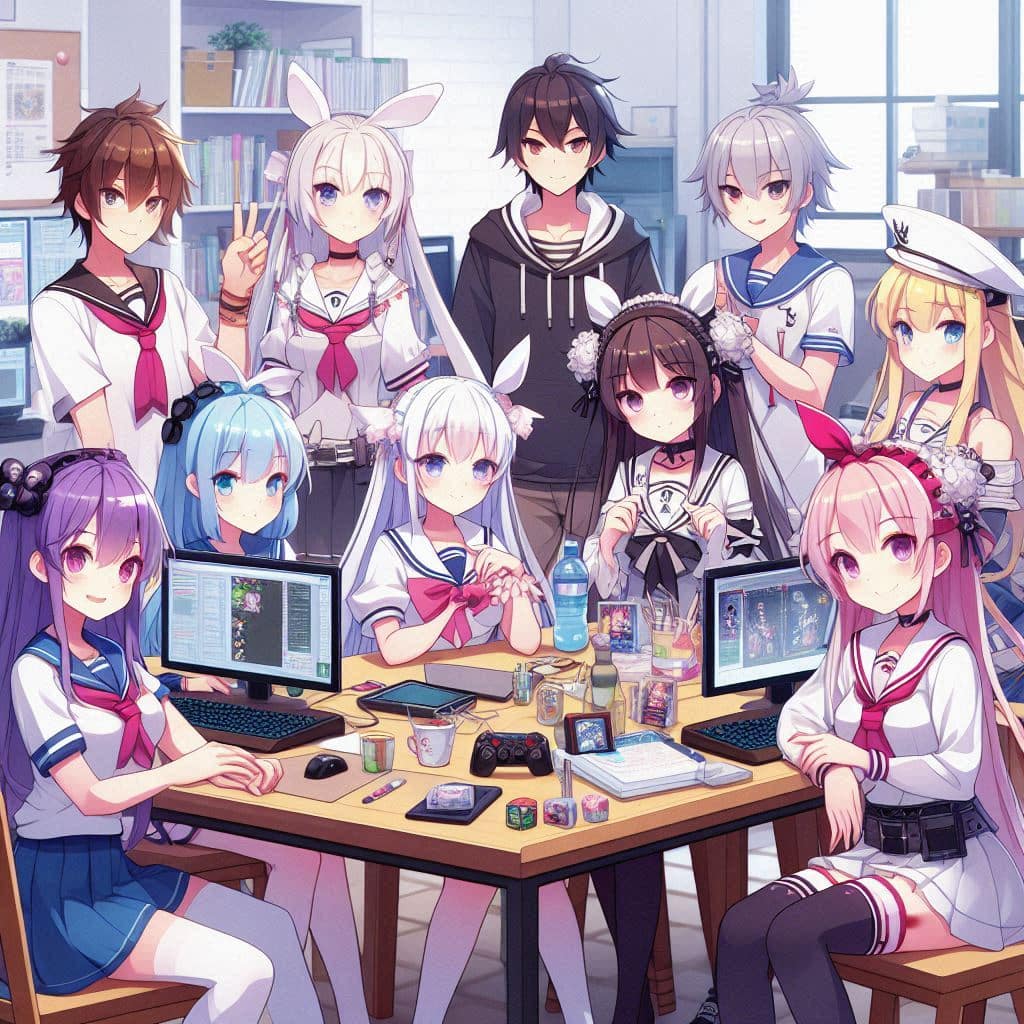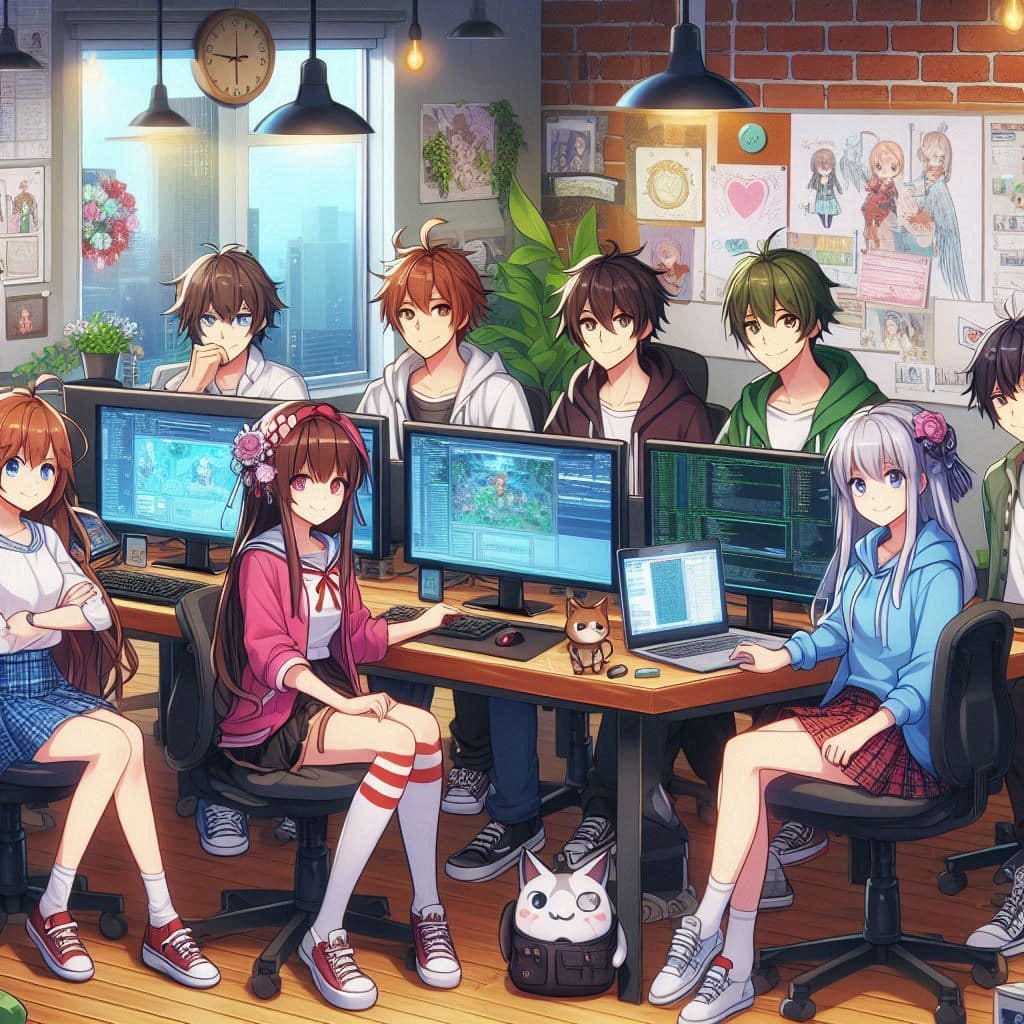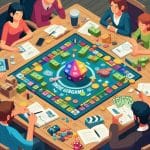Creating a successful game is no small feat. It requires a well-coordinated team of talented individuals, each contributing their unique skills to bring the game to life. Building a game development team involves understanding the various roles, responsibilities, and how to foster a collaborative environment. This blog post will explore the key roles within a game development team, offer tips on building an effective team, and highlight the importance of a cohesive work environment.

The Importance of a Strong Game Development Team
A strong game development team is the backbone of any successful game. Each member brings a unique set of skills and perspectives, contributing to the overall vision and execution of the game. A well-organized and motivated team can overcome challenges, innovate, and create a game that resonates with players.
Key Roles in a Game Development Team
1. Game Designer
Responsibilities:
- Conceptualizing the game idea and mechanics
- Designing gameplay systems, levels, and user experience
- Writing game design documents and communicating the vision to the team
Skills Required:
- Creativity and innovation
- Strong communication and documentation skills
- Understanding of player psychology and game mechanics
Use Case Scenario: Imagine a game designer working on a fantasy RPG. They create a compelling storyline, design intricate quests, and ensure that each level offers a unique challenge, keeping players engaged and invested in the game world.
2. Programmer
Responsibilities:
- Writing and maintaining the codebase
- Implementing gameplay features, physics, and AI
- Debugging and optimizing the game for performance
Skills Required:
- Proficiency in programming languages (e.g., C++, C#, Java)
- Problem-solving and logical thinking
- Knowledge of game engines (e.g., Unity, Unreal Engine)
Use Case Scenario: A programmer might develop the AI for enemy characters, ensuring they react intelligently to the player’s actions, providing a challenging and immersive experience.
3. Artist
Responsibilities:
- Creating visual assets such as characters, environments, and props
- Developing concept art and storyboards
- Collaborating with the art director to maintain a consistent visual style
Skills Required:
- Proficiency in graphic design and 3D modeling software (e.g., Photoshop, Blender)
- Strong artistic skills and attention to detail
- Ability to translate concepts into visual elements
Use Case Scenario: An artist designs a stunning game environment, complete with detailed textures and atmospheric lighting, creating an immersive world that captivates players.
4. Animator
Responsibilities:
- Bringing characters and objects to life through animation
- Creating realistic movements and interactions
- Working closely with the art and programming teams
Skills Required:
- Expertise in animation software (e.g., Maya, Spine)
- Understanding of anatomy and motion
- Creative storytelling through movement
Use Case Scenario: An animator might create fluid and natural movements for a game’s protagonist, ensuring their actions feel lifelike and responsive.
5. Sound Designer
Responsibilities:
- Creating sound effects and ambient sounds
- Composing music and integrating it into the game
- Ensuring audio enhances the gameplay experience
Skills Required:
- Proficiency in audio software (e.g., Pro Tools, Audacity)
- Musical talent and understanding of sound design principles
- Ability to sync audio with game events
Use Case Scenario: A sound designer creates a dynamic soundtrack that responds to the player’s actions, heightening the tension during a battle sequence and providing a richer gaming experience.
6. Writer
Responsibilities:
- Crafting the game’s narrative, dialogue, and lore
- Creating character backstories and world-building
- Ensuring the story aligns with the game design
Skills Required:
- Strong writing and storytelling skills
- Understanding of narrative structure and pacing
- Ability to collaborate with designers and artists
Use Case Scenario: A writer develops compelling dialogue for a mystery game, ensuring each character has a distinct voice and the plot unfolds in a captivating manner.
7. Quality Assurance (QA) Tester
Responsibilities:
- Testing the game for bugs, glitches, and usability issues
- Providing feedback on gameplay balance and user experience
- Ensuring the game meets quality standards before release
Skills Required:
- Attention to detail and analytical thinking
- Strong communication skills for reporting issues
- Understanding of game mechanics and player behavior
Use Case Scenario: A QA tester identifies a critical bug that causes the game to crash during a specific mission, allowing the development team to fix it before the game’s release.
8. Project Manager
Responsibilities:
- Overseeing the development process and ensuring deadlines are met
- Managing team communication and workflow
- Coordinating between different departments
Skills Required:
- Strong organizational and leadership skills
- Understanding of project management tools and methodologies
- Ability to handle stress and multitask
Use Case Scenario: A project manager ensures that all team members are on track with their tasks, coordinating meetings and maintaining a clear development timeline, ensuring the project stays on schedule.
Building a Cohesive and Effective Game Development Team
1. Defining Clear Roles and Responsibilities
Clearly defining each team member’s role and responsibilities helps avoid confusion and overlap, ensuring everyone knows what is expected of them. This clarity fosters accountability and efficiency.
2. Fostering Open Communication
Encourage open communication among team members to promote collaboration and problem-solving. Regular meetings, feedback sessions, and a culture of transparency can help address issues early and keep everyone aligned with the project’s goals.
3. Encouraging Collaboration and Teamwork
Promote a collaborative environment where team members can share ideas and support each other. Team-building activities and a positive work culture can enhance morale and productivity.
4. Providing Resources and Training
Ensure that team members have access to the necessary resources, tools, and training to perform their tasks effectively. Continuous learning and development can keep the team updated with the latest industry trends and technologies.
5. Setting Realistic Goals and Milestones
Set achievable goals and milestones to maintain momentum and motivation. Break down the project into manageable tasks, celebrating small victories along the way to keep the team motivated.
6. Handling Conflict Resolution
Address conflicts promptly and fairly to maintain a harmonious work environment. Encourage respectful communication and mediation to resolve issues and keep the team focused on the project.
7. Recognizing and Rewarding Contributions
Acknowledge and reward the hard work and achievements of team members. Recognition can boost morale and encourage continued excellence.
Conclusion
Building a successful game development team involves more than just assembling talented individuals. It requires understanding the various roles and responsibilities, fostering a collaborative environment, and providing the necessary resources and support. By focusing on clear communication, teamwork, and continuous improvement, you can create a cohesive and effective team capable of bringing your game vision to life.
Building a game development team is a dynamic and ongoing process. As you assemble and nurture your team, remember that each member plays a crucial role in the success of your project. With the right mix of skills, collaboration, and a shared passion for gaming, your team can achieve remarkable results and create games that captivate and inspire players worldwide.



